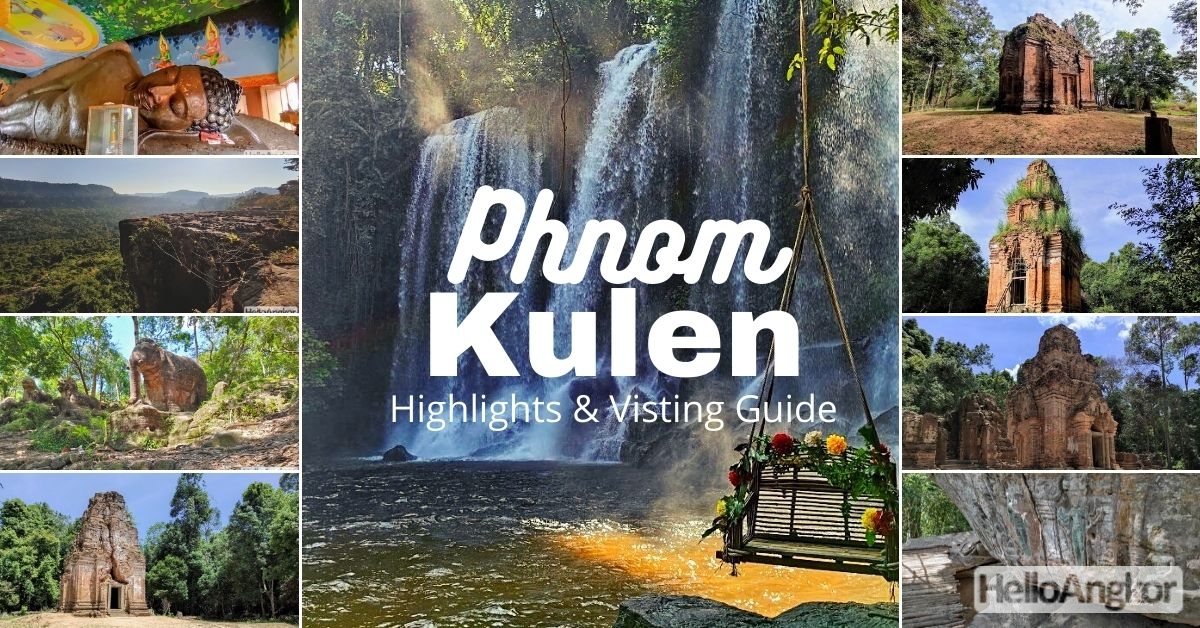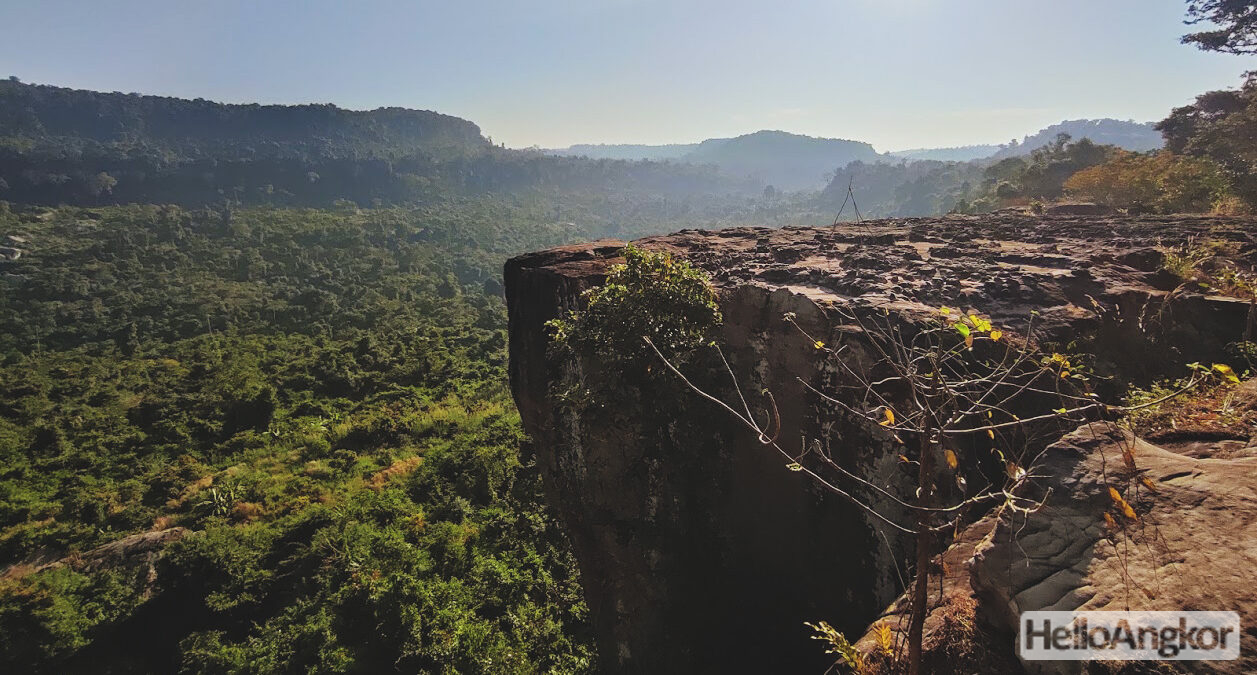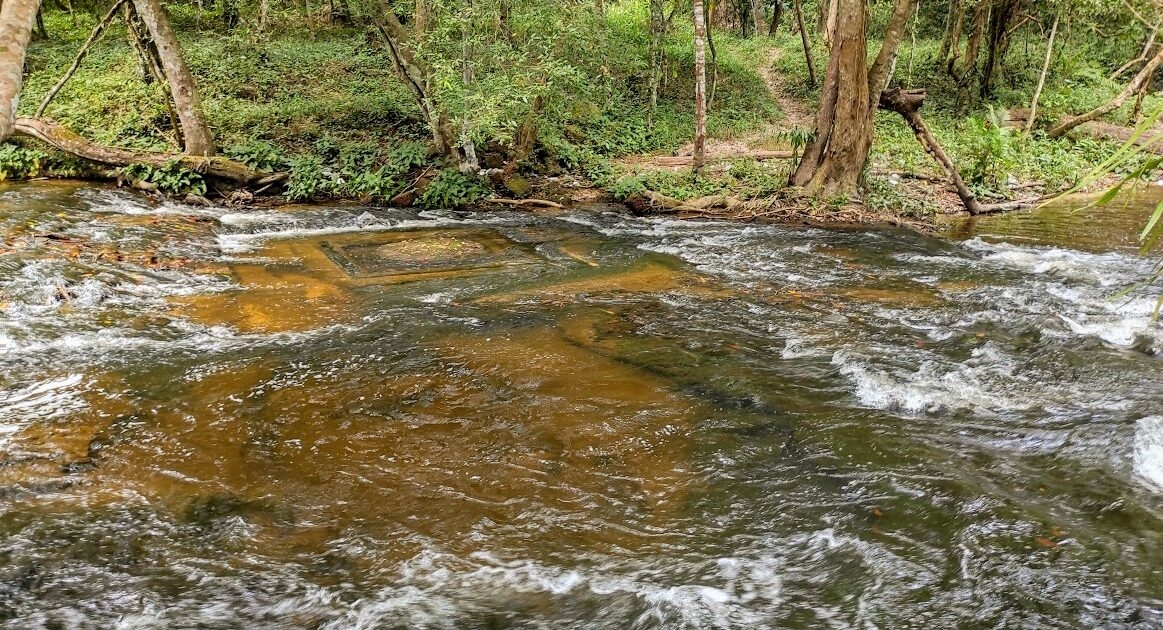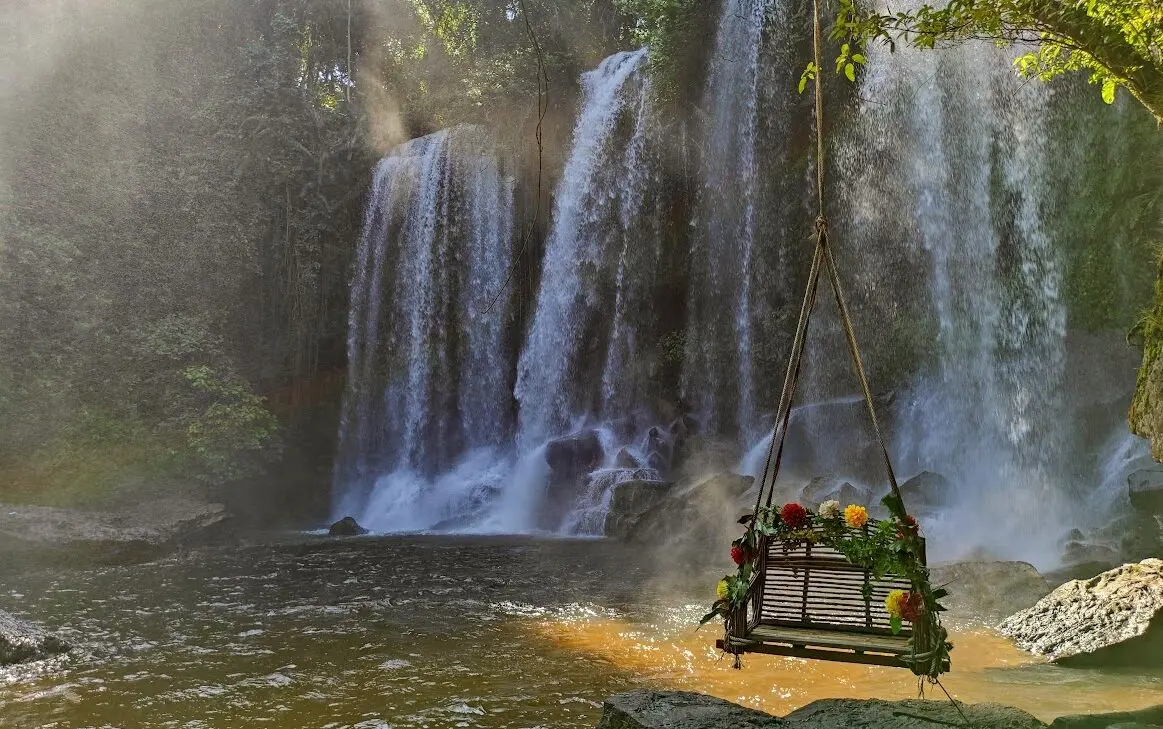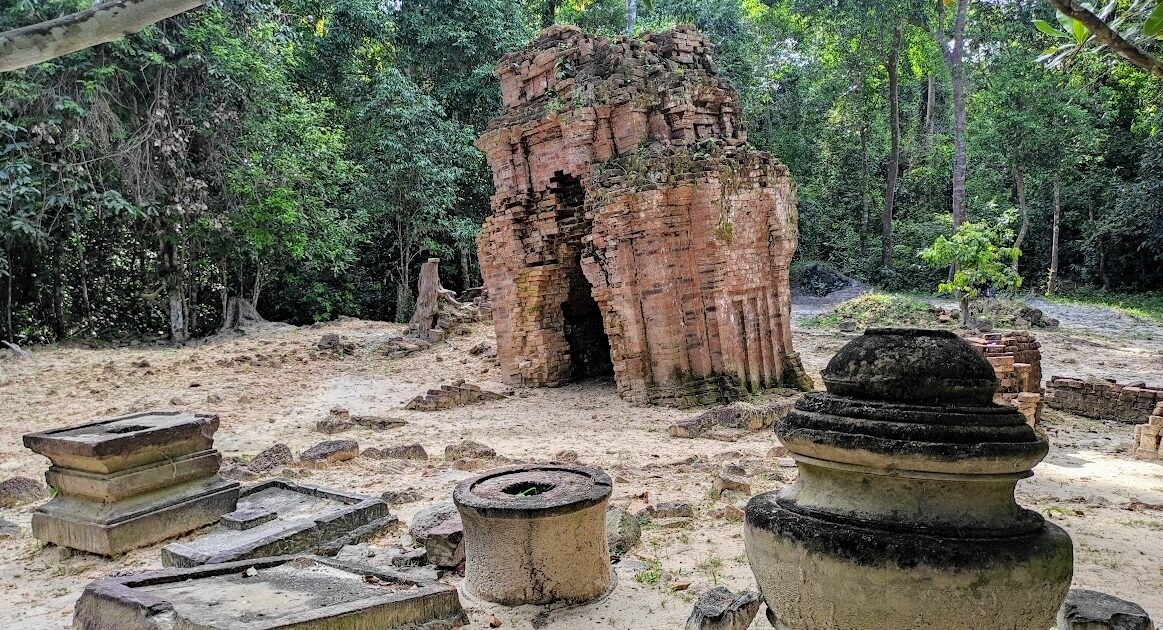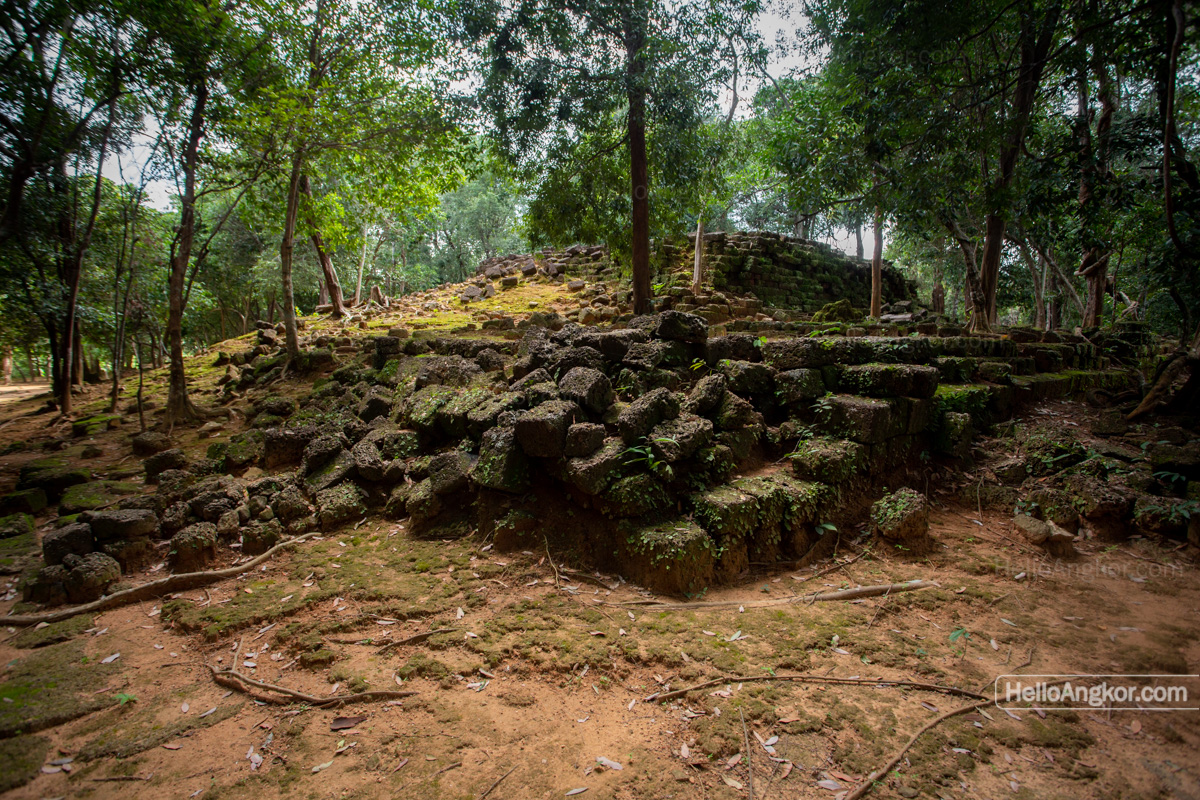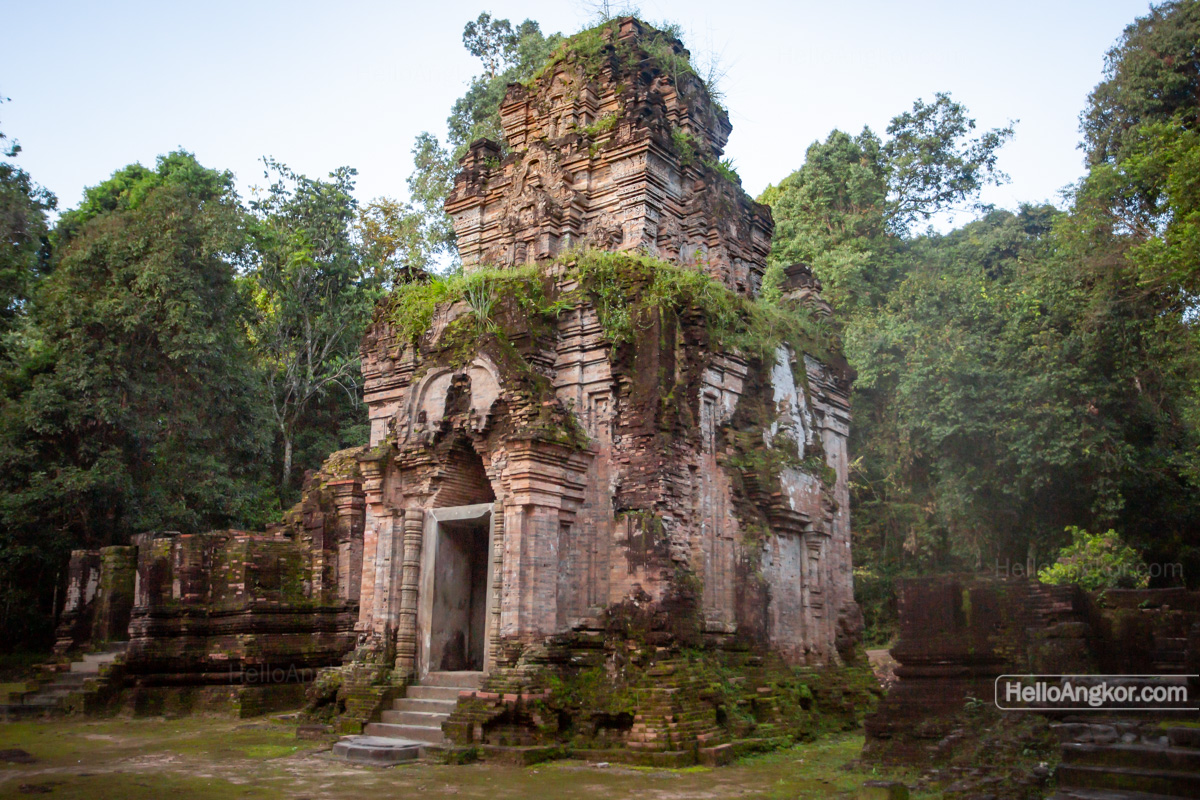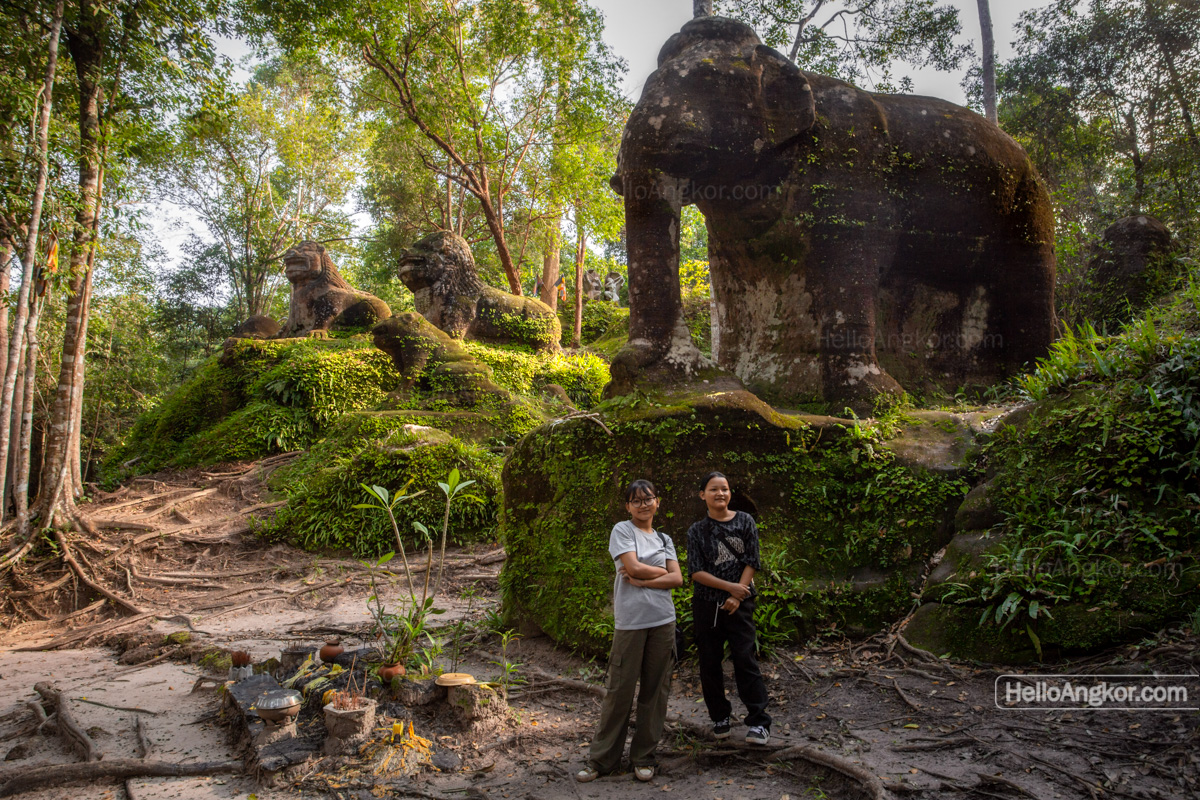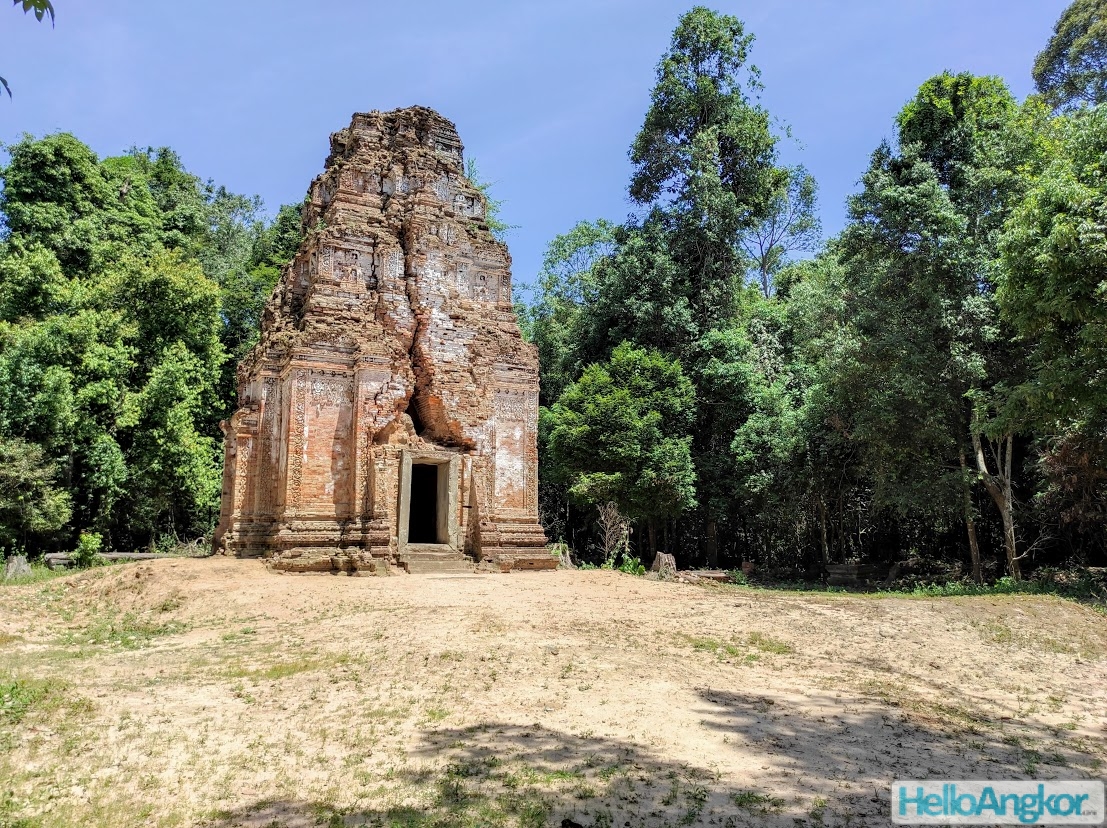Phnom Kulen – The Birthplace of Angkor and home to the ancient city of Mahavendarpata
Phnom Kulen (or Kulen Mountain) is a popular destination located north of Siem Reap well known for its stunning waterfall, reclining Buddha, amazing scenic views, and nature. It is also the birthplace of the ancient Angkor era featuring archeological remains of an ancient city and a vast array of stunning ancient temple sites nestled in a natural wonderland.
Phnom Kulen is widely regarded as the birthplace of the Angkorian Empire and the sacred mountain where King Jayavarman II (770–835 AD) would proclaim independence and be anointed as Chakravartin (God-King/King of Kings), or Universal Monarch. It would be here where Jayavarman II would build his capital Mahendraparvata (‘mountain of great Indra’) and set in motion the beginning of one of the world’s greatest empires. In the centuries that followed, the world’s largest pre-industrial city, Angkor, and the world’s largest religious monument, Angkor Wat, would be built on the plains below.
Phnom Kulen Highlights
Apart from the natural wonders including the amazing waterfall, there are some 50+ ancient sites located atop and around Kulen Mountain including ancient hermitages and rock carvings, incredible stone carved monoliths, ancient brick temples, and the archeological remnants of what was an ancient royal palace and “urban area” with expansive and complex infrastructure. Below are sixteen of the highlights and you can click the image for more info on each attraction. The map further below features even more.
Phnom Kulen Map
What about Kbal Spean? Kbal Spean and the Angkor Center for Conservation of Biodiversity (ACCB) are actually on the other side of the mountain range known as Kulen Hills and accessed via a different road (no fee) although you do require an Angkor Pass same as you would for the other central temples of Angkor. You can certainly combine the two, either visiting Kbal Spean before or after heading up the Phnom Kulen side.
Getting a Kulen Mountain Ticket
All visitors (except Khmer) are required to purchase a ticket to head up Kulen Mountain. The ticket can be purchased in advance from the ticket office near City Hotel on Road 6 Siem Reap (see map) or purchased on entry to the mountain (cash only). Either way, the ticket is now $20 USD and covers the duration of your visit. You do not need an Angkor Pass to visit the temples atop Kulen Mountain.
Getting to and around Kulen Mountain
From Siem Reap, you’ll head north and turn off just before Banteay Srei to take the winding road up the mountain. From Siem Reap to the top of the mountain and Preah Ang Thom pagoda it takes around 95 mins or so by car. You can also come from the other side via Svay Leu and from Siem Reap to Svay Leu and then up the mountain to Preah Ang Thom pagoda or Anlong Thom area, which would take around 120 mins.
There is a new road over the top of Kulen Mountain that’s almost complete which connects Banteay Srei on one side and Svay Leu on the other side.
The common route is to head up the mountain via Banteay Srei (map), stopping at the main ticket office (map), and following a mildly steep and winding road with spectacular scenery along the way. The road is part sealed and part rough dirt road (at the time of writing).
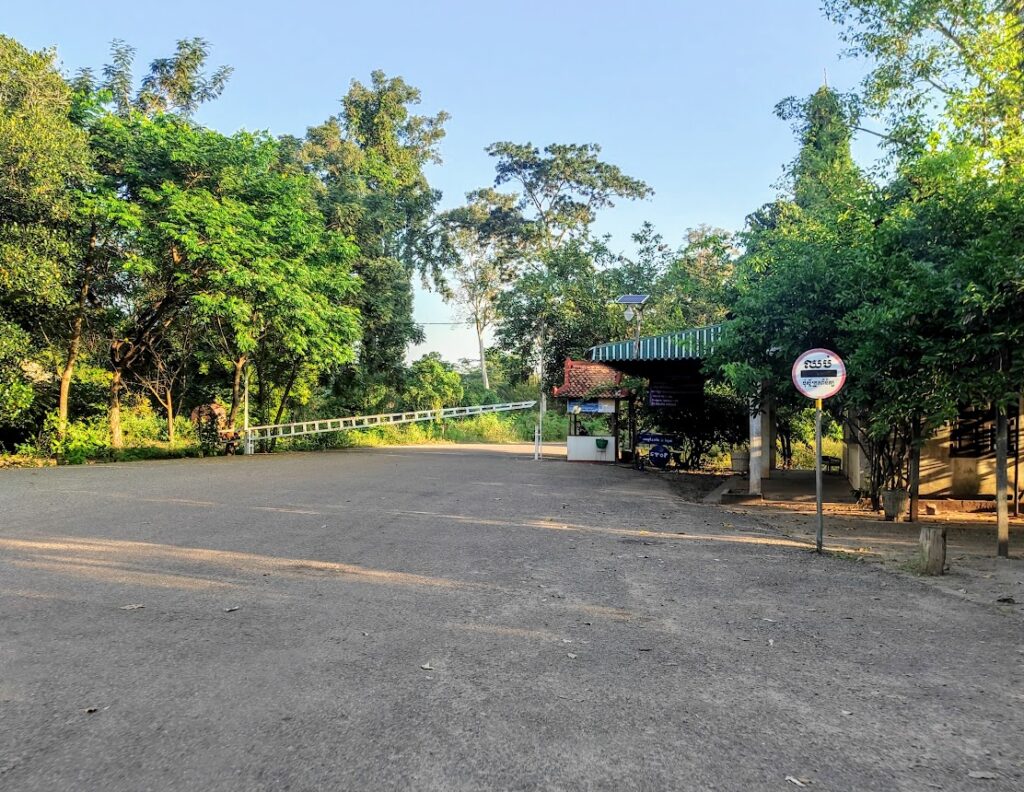
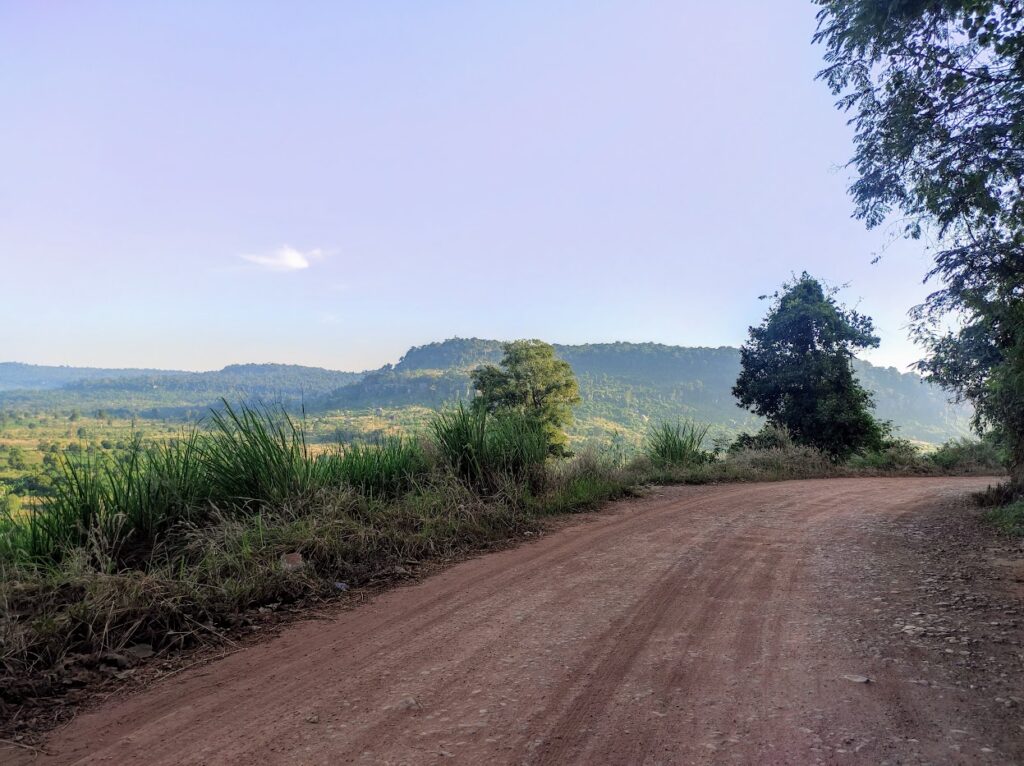
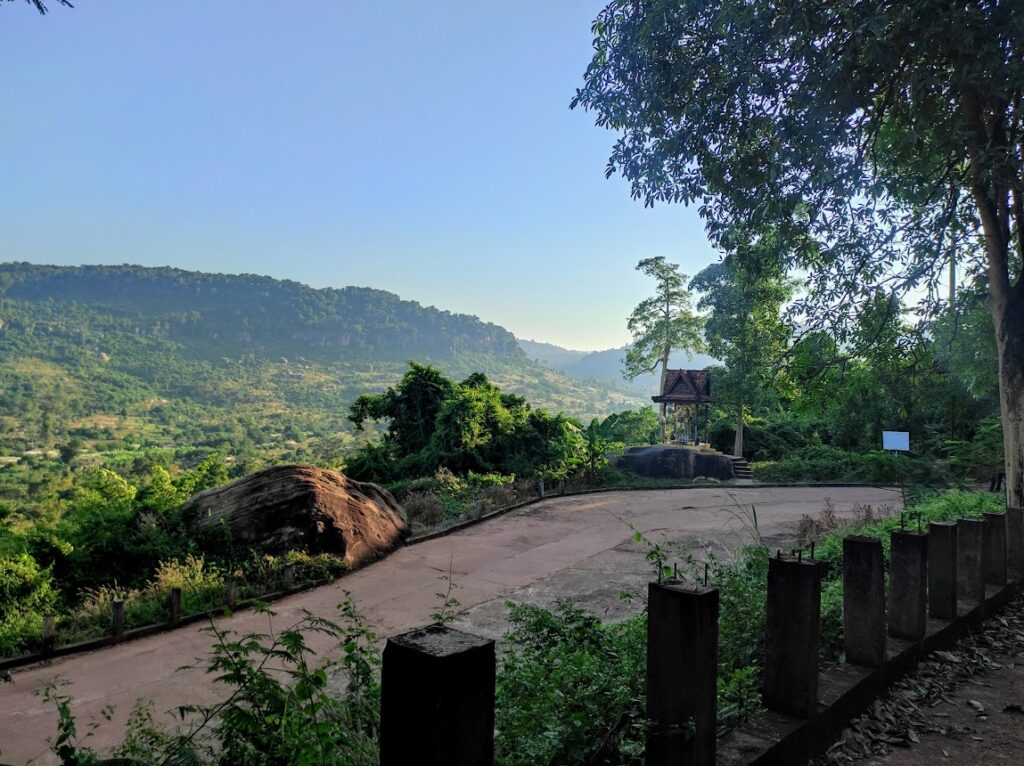
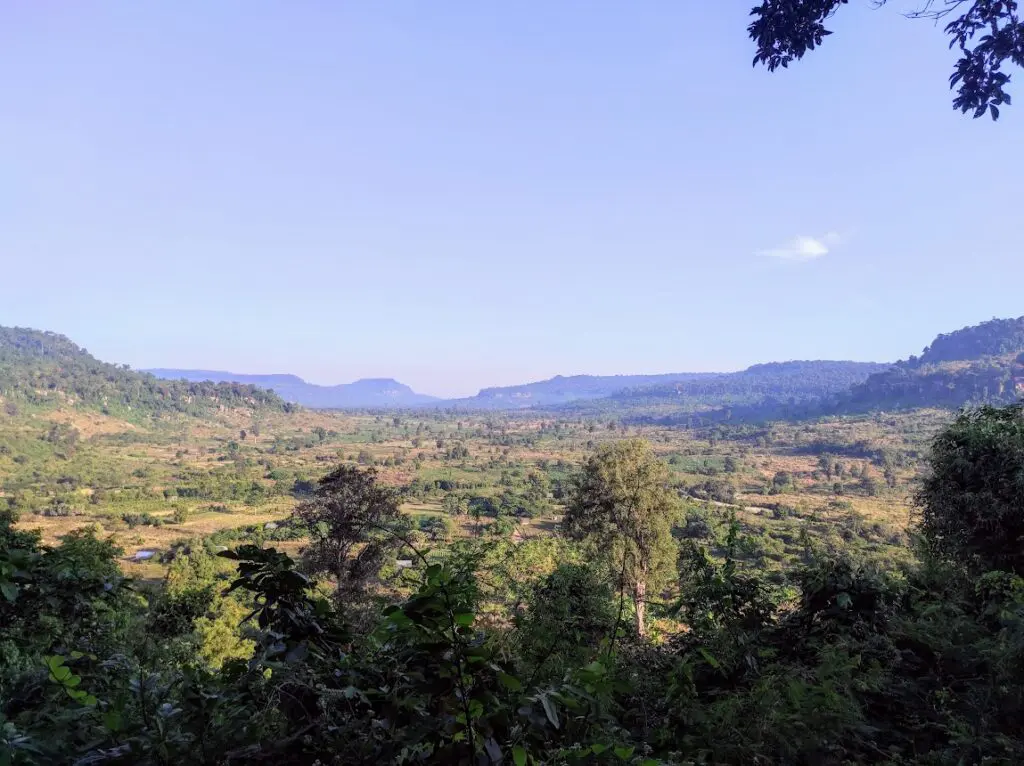
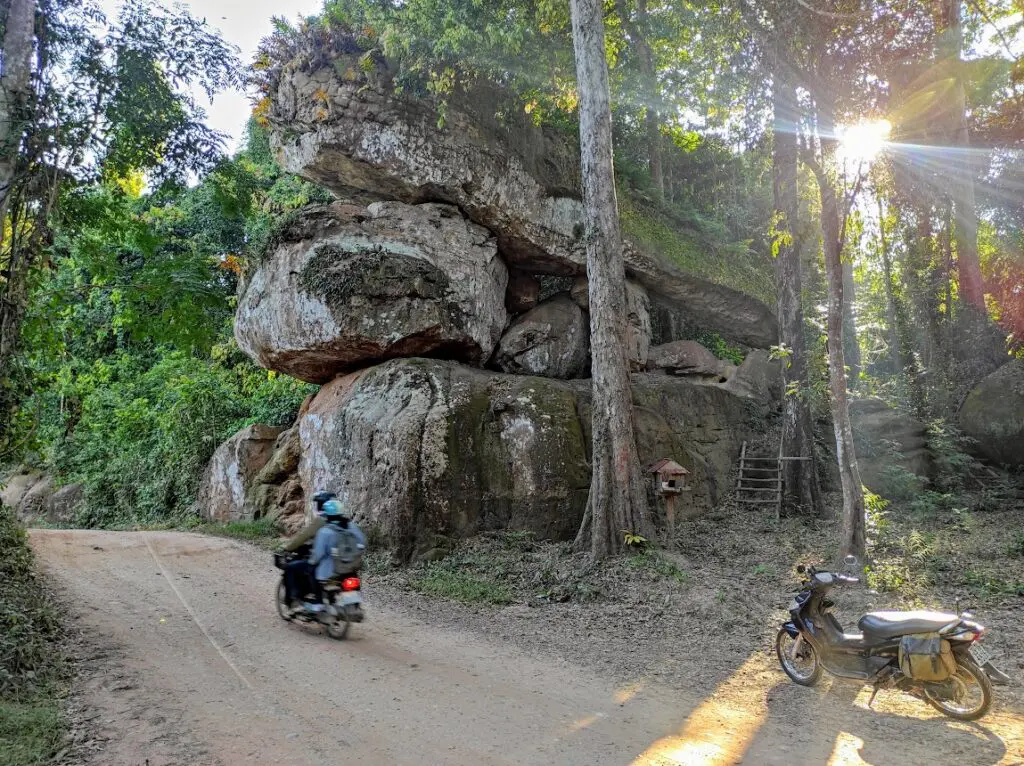
From the Svay Leu side, it is a little steep and not suitable for scooters/tuk-tuks but anything in good condition over 125cc should be OK for bikes and most cars should be OK. If going down that way you will also need to be confident in your brakes and use low gearing to your advantage. That said, the views from the smooth new concrete road that winds up the mountain are spectacular.
Most will be more comfortable with hiring a car and driver which can be easily organised in Siem Reap. Prices vary but expect to pay $50 per day and up for a four-seat car and driver. Of course, on top of that is the $20 per person entrance fee payable at the mountain or in advance at City Hotel or some travel agents.
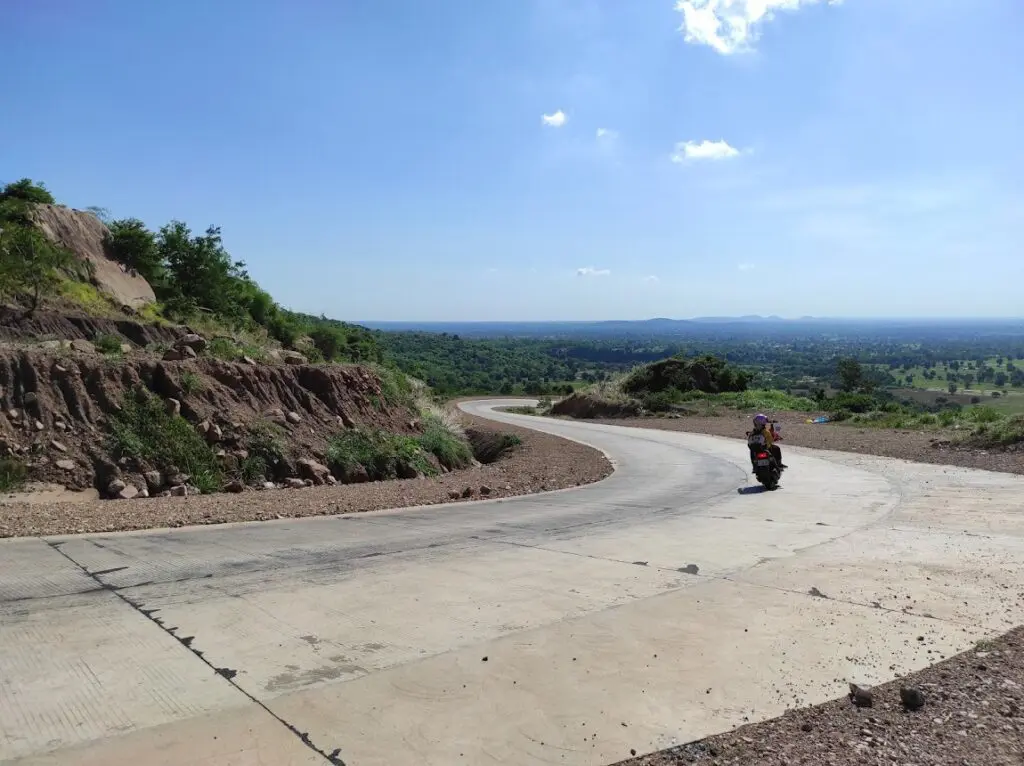

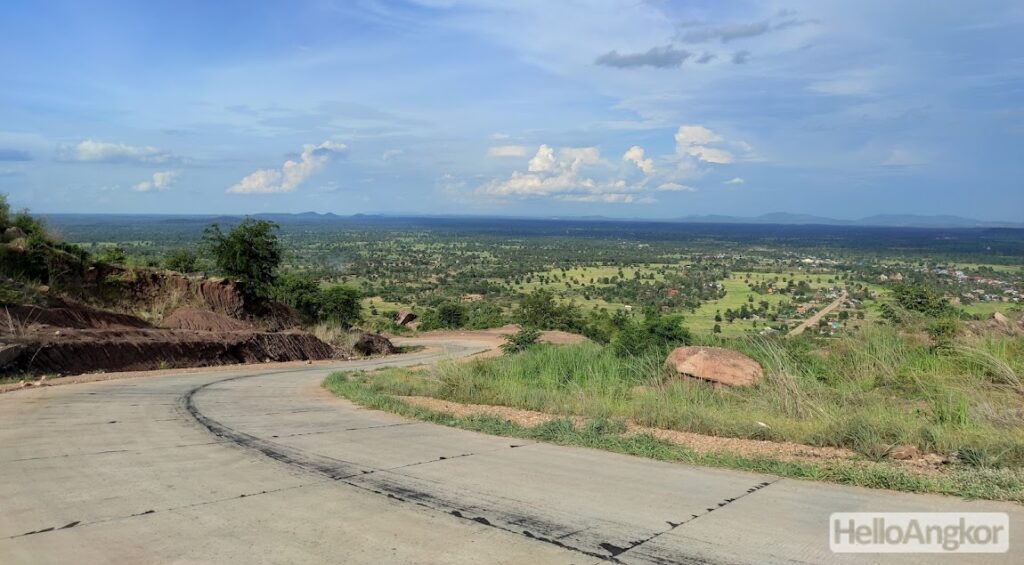
Getting around the Attractions and Ancient sites
You are not likely to need a guide around the waterfall, River of 1000 Lingas, or Preah Ang Thom Pagoda area, but for the other ancient sites, it’s a must. A local guide can fast-track you around the sites and get you around them safely.
Google Maps does have some trails marked correctly but most are not. The trails are changeable and are often flooded in some sections during the wet season, some sections are smooth and easy-going, other sections cross rocky terrain and undulating eroded embankments. It’s also difficult to know what is private property and what is the trail to the site.
At the ticket checkpoint, they do offer a map pointing out the highlights and their general location which is useful, but not enough to guide yourself to the more remote sites that lie beyond the waterfall and Preah Ang Thom area. A recommended option is to arrange a guide in Siem Reap.
Stay More than a Day
While you can do a day trip to Phnom Kulen, and many do, there is a bigger opportunity to do much more. On a day trip, you’ll have enough time to see the pagoda, the lingas, the waterfall and maybe one temple. That’s really just scratching the surface, there is a lot more to Phnom Kulen.
There are no hotels on Kulen Mountain but more appropriately there are several campsites. Along with tours and other packages, Kulen Adventures offer a campsite with amenities, see kulenadventures.com. Terre Cambodge also offers immersion packages and guided trekking. Another option is the Kulen Trails Campsite which is very central in Anlong Thom.
Archeological Research, Environment, and Local Development
Since 2008, ADF (Archaeology and Development Foundation) has been carrying out a program that has combined the important work of archeological research in concert with the local community through the development of eco-tourism, sustainable income generation, improving infrastructure, and protecting the unique environment atop the massive mountain plateau.
You can find out more about ADF and support the not-for-profit organisation via their website: adfkulen.org
A Short Intro to the Ancient History of Phnom Kulen
The existence of an ancient capital called Mahendraparvata was first revealed in inscriptions by early French researchers but its location was unconfirmed. The location of the lost ancient capital wouldn’t be conclusively known until 2019 after years of foot surveys and later lidar surveys confirmed that this was in fact the Mahendraparvata as recorded in inscriptions found almost 100 years prior.
While researchers in the 1900s had mapped several temples on the mountain it was the recent surveys and later excavations that revealed the massive extent of the ancient developments atop the near 1000 km2 mountain range. Archeological features would cover some 40–50km2 including an ancient royal palace, temples, complex hydraulic features, and more, creating an urban landscape set on a large grid-like layout with north-south and east-west axes.
Moreover, while the establishment of the bulk of the temples dates to the ninth-century reign of Jayavarman II (770–835 AD), research suggests that the site was in continuous use receiving renovation and transformation through to the twelfth century even while the capital had shifted to the plains below with the creation of the new capital, Angkor. Moreover, the location continued to be an important place of worship in the post-Angkor era seeing the creation of the giant reclining Buddha carving at Preah Ang Thom.
Also fascinating, is the existence of Buddhist sites possibly dating to the same era as the Hindu king, Jayavarman II. Two sites, Don Meas and Sema Peam Gre, are somewhat unusual and quite interesting as they are ancient sites but not in the style of the well-known brick temples of the time, actually, there were Theravadan-style Buddhist sites featuring an area demarcated by sema stones. The sema stones, many still in situ, are stunning, large, ornate, and unlike any of the sema stones that would become commonplace much later in history around the 13-14th century onwards as Theravada became the state religion which it remains till this day.
Further reading
- Les Sites Archeologiques de la region Bhnam Gulen, Boulbert and Dagens 1973
- Sema Stones and Mountain Palaces from the Dawn of Angkor, Latinis and Murphy 2017
- Stern Philippe. III. Travaux exécutés au Phnom Kulên (15 avril-20 mai 1936). In: Bulletin de l’Ecole française d’Extrême-Orient. Tome 38, 1938. pp. 151-174;
- Mahendraparvata: an early Angkor-period capital defined through airborne laser scanning at Phnom Kulen, Chevance et al 2019
More
There are a lot more ancient sites at the foothills of Kulen too, especially so around the eastern Svay Leu area such as Peung Kom Nuo, Wat Svay Leu, Prasat Ta Ong and more. See Svay Leu District.

